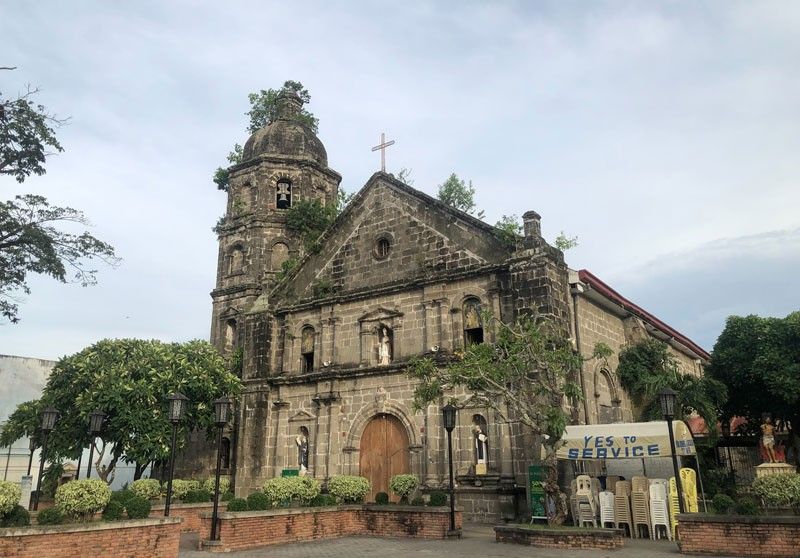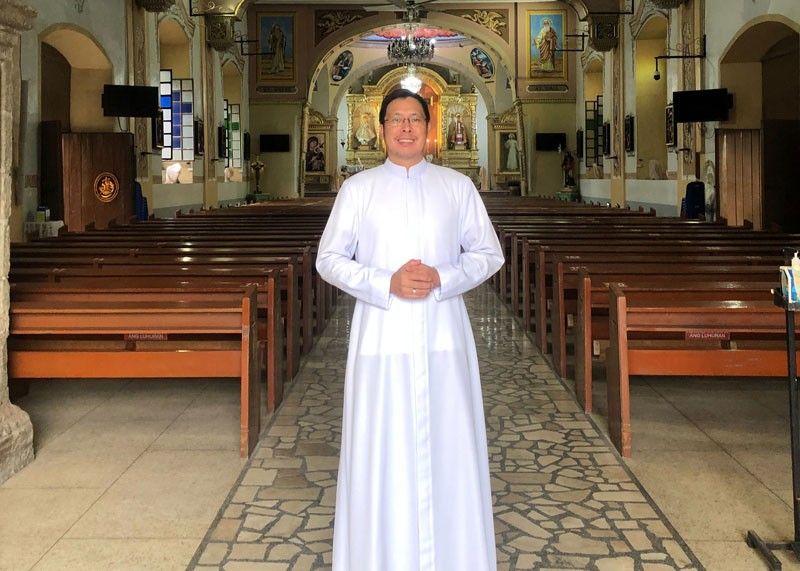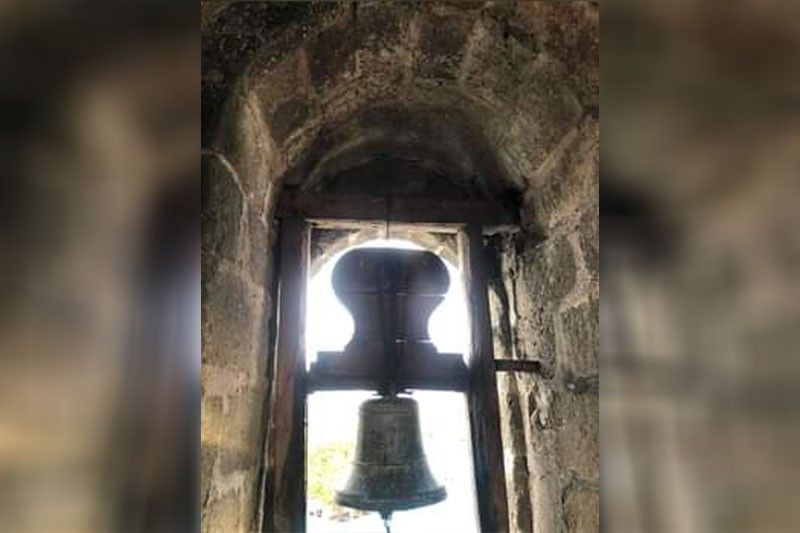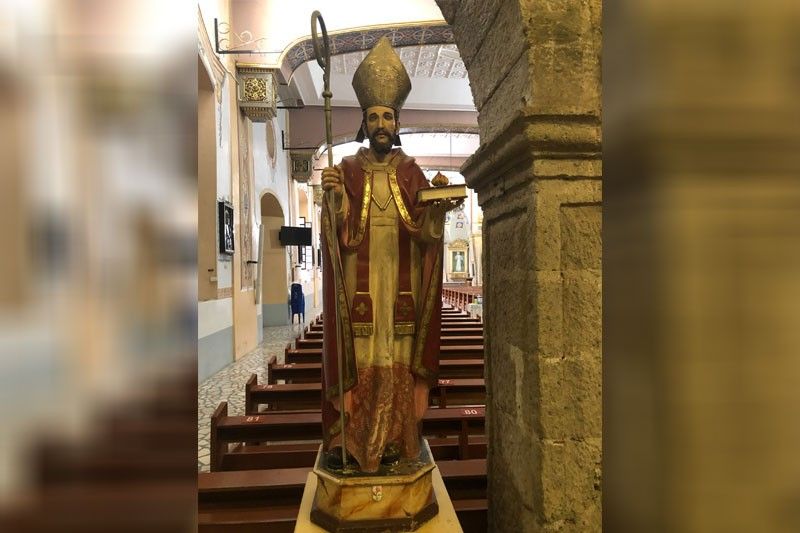Returning a favor to St. Polycarp

To have faith is to see the handiwork of the unseen God. Faith is the force that says “Go!” even if all you see is a mist, or worse, only darkness.
It is the belief that everything will be all right even if uncertainties abound. Where there is faith, there is life. For faith is the hope and light of life.
In the city of Cabuyao is a 250-year-old church called St. Polycarp. My mother Candida, to this day, believes that the patron saint, known for his ability to help extinguish fires, was instrumental in my UP education. Born to want, I would find it hard to pursue college unless I got a scholarship. My mother, unknown to me, devoted nine days of prayers to St. Polycarp in August 1987. Her prayer was specific: for me to pass the UPCAT because it was the only way I would be able to go to college in 1988. For nine days she would leave the house in the afternoon, take the jeepney from Gulod to the town proper, then walk to the church. On the ninth day of her novena was my exam; I was running a 39-degree fever. I had three Mongol 2 pencils, two tablets of Medicol, two pieces of boiled plantain, a small pack of Presto peanut butter cookies, one small tetra pack of Magnolia Chocolait, deep-well water in the cleaned long-neck bottle of Lorin’s patis — and faith.
My mother never stopped praying. By April 1988 the results were released. I passed the UPCAT. UPLB was my choice of campus because it was only an hour away from Gulod. On the day she learned I passed, she cracked open her piggy bank and with some coins for our jeepney fare, she brought me to St. Polycarp Church. That was the only time she told me about her secret covenant with St. Polycarp and her pleas to God. On June 6, 1988, my mother’s 44th birthday, was my first day of school in UPLB. I had my shot at the future — clear, clean, unobstructed. And my mother told me specifically to one day return the favor to St. Polycarp — because faith also resides in a grateful heart.
Today, in God’s perfect timing, is the day I’m trying to be worthy of the favor.

Fr. Mardie Javier Maligat, the diocesan parish priest of St. Polycarp Church for two years now, is spearheading the “Road to Restoration of St. Polycarp Belfry and Façade” fundraising project. The belfry, he said, was further damaged by the earthquake that jolted Batangas recently.
“According to the report of Escuela Taller de Filipinas (a foundation involved in heritage conservation), there are major defects, damages, material deterioration, and associated issues of masonry walls found mostly on the belfry. Cracks and fissures of significant size and length were found on the masonry dome and the topmost level of the belfry. There are four major cracks that were noted on the dome that run along masonry joints that either extend to the wall or terminate on the upper portions of the arched openings. The earthquake last July 24, 2021, somehow enhanced the cracks on the belfry,” explained Fr. Mardie, a charismatic priest from Pila, Laguna.
The restoration project will amount to P11.2 million. So far, the church has solicited two percent of the total amount needed. The damage in the belfry is the reason why the bells have stopped ringing since 2014. It has three bronze bells, with the two small bells made in 1868 and one big bell made in 1841.
“The belfry is very important to our parishioners because the ringing of bells is an invitation of God to gather in the Church for worship. The ringing of bells is also important in liturgical celebrations of the Church such as Holy Week, Easter, Simbang Gabi and Sunday Masses,” said Fr. Mardie.
For both the faithful who seek a place of worship and the erudite who understand form and style, the St. Polycarp Church is a treasure worth saving.
This is how architect and architectural historian Gerard Lico of UP Diliman describes St. Polycarp Church: “The neoclassical facade has a retablo-like configuration but refashioned according to the stylistic principles of the Palladian Tuscan Order. This is crowned with a triangular pediment whose tympanum is decorated with a recessed circular window at the center and flanked by plain segmented triangulation in high-relief. On the apex of the pediment the cross stood. Two levels of engaged Tuscan columns, separated on each level by simplified entablature, break the otherwise flat facade.”
Fr. Mardie appeals to kind and generous souls to help restore St. Polycarp Church. “I always tell my parishioners that the church is our treasure, the treasure of Cabuyenos. She is witness to Cabuyao’s history and a channel of God’s blessings. For 250 years, the parish has been good to us and continuously serves us. She’s always there for us in our times of need; now that she’s the one needing our help, let us come to her aid,” he said.
According to the web page of St. Polycarp, the Agustinian missionaries were the first to arrive in the town of Tabuko (Cabuyao) after it was proclaimed an encomienda by Miguel Lopez de Legazpi on Jan. 16, 1571. The town became known as Cabuyao, after a citrus tree called Kabuyaw that grew abundantly in the area. Oral history has it that when some Spaniards asked the people about the name of the place, they said “Kabuyaw,” thinking that the former were asking for the name of the tree.

When the Franciscans came, they built the first church in the coastal barrio of Marinig for easy trade access in Laguna Bay. But the soil was loose and the place was prone to flooding. The new church was constructed in the town proper between 1763 and 1771, dedicated to St. Polycarp, bishop, martyr and titular head of the Catholic Church in the whole of Asia.
The church would be a silent witness to a bloody combat between Sakdalistas and the constabulary on May 3, 1935. During the Japanese Occupation, the church was a shelter for wounded soldiers and a stable for their horses.
Fr. Mardie is hopeful that God will touch the hearts of people to help in the church’s restoration. His faith has taught him that help, like grace and miracles, will come.
“God would not give you a challenge that you cannot overcome. He will be there to help and strengthen you, you just have to have faith in Him and believe also in yourself And God calls each of us to be a blessing to one another. That is why I try my best every day to be a blessing to other people,” Fr. Mardie ends.
That is what faith is all about. Faith is an oasis in the desert, the sunshine after a storm, a whirlpool of blessings in a seemingly immobile world. Faith is a mother believing without a single molecule of doubt that with the intercession of St. Polycarp, her son will reach the stars. It is all about returning the favor because gratitude is the clear language of faith.
(If you wish to help, call the St. Polycarp Parish at +63-963-758-9652 or landline numbers 049-543-0679 and 049-304-5950.)

- Latest
























